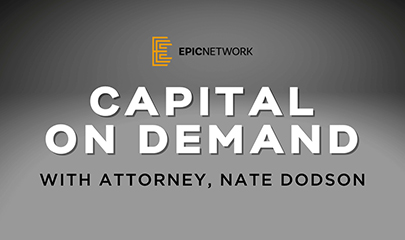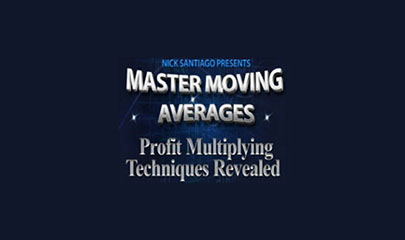-
×
 ALL-ROUND FOOTSTEPS SOUND FX By Ocular Sounds
1 × $8,00
ALL-ROUND FOOTSTEPS SOUND FX By Ocular Sounds
1 × $8,00 -
×
 Secrets Of Subtle Sales Mastery Deluxe By Paul Ross
1 × $23,00
Secrets Of Subtle Sales Mastery Deluxe By Paul Ross
1 × $23,00 -
×
 How to Build a Happy Cult Circle of 2 to 7 Girlfriends in 3 months by Jesse Charger
1 × $5,00
How to Build a Happy Cult Circle of 2 to 7 Girlfriends in 3 months by Jesse Charger
1 × $5,00 -
×
 Fractal Markets FX (SMC)
1 × $5,00
Fractal Markets FX (SMC)
1 × $5,00 -
×
 The Meal Prep and Meal Planner Bundle
1 × $5,00
The Meal Prep and Meal Planner Bundle
1 × $5,00 -
×
 SEO Case Study Database 2023: Identify and validate opportunities in minutes By Adam Gent
1 × $21,00
SEO Case Study Database 2023: Identify and validate opportunities in minutes By Adam Gent
1 × $21,00 -
×
 Yoga Nidra - Yogic Sleep By Yoga International
1 × $39,00
Yoga Nidra - Yogic Sleep By Yoga International
1 × $39,00 -
×
 Messaging Program By Phoebe Kuhn - The Content Emporium
1 × $209,00
Messaging Program By Phoebe Kuhn - The Content Emporium
1 × $209,00 -
×
 SATYA 3 - Online Immersion - March 2023 By Tias Little
1 × $225,00
SATYA 3 - Online Immersion - March 2023 By Tias Little
1 × $225,00 -
×
 SATYA 2 - Online Immersion - January 2023 By Tias Little
1 × $225,00
SATYA 2 - Online Immersion - January 2023 By Tias Little
1 × $225,00 -
×
 Creating Helpful Content Workbook By Marie Haynes
1 × $31,00
Creating Helpful Content Workbook By Marie Haynes
1 × $31,00 -
×
 Product Marketing Bootcamp By Melinda Chung
1 × $85,00
Product Marketing Bootcamp By Melinda Chung
1 × $85,00 -
×
 Dave Mac's Push Ads Course By Dave Mac
1 × $31,00
Dave Mac's Push Ads Course By Dave Mac
1 × $31,00 -
×
 Pilates Apparatus - The Complete Collection By Breathe Education
1 × $272,00
Pilates Apparatus - The Complete Collection By Breathe Education
1 × $272,00 -
×
![Full Body [P]Rehab By The Prehab Guys](https://kobozon.com/wp-content/uploads/2024/03/Full-Body-PRehab-By-The-Prehab-Guys.jpg) Full Body [P]Rehab By The Prehab Guys
1 × $155,00
Full Body [P]Rehab By The Prehab Guys
1 × $155,00 -
×
 Recruiting Professionals Live Dials By Todd Falcone
1 × $23,00
Recruiting Professionals Live Dials By Todd Falcone
1 × $23,00 -
×
 Family Systems Therapy with Kenneth Hardy
1 × $8,00
Family Systems Therapy with Kenneth Hardy
1 × $8,00 -
×
 Ultimate Guide to HARO Success By Easy Peasy Blogging
1 × $15,00
Ultimate Guide to HARO Success By Easy Peasy Blogging
1 × $15,00 -
×
 The Ultimate YouTube Ads Black Friday Bundle By Aleric Heck
1 × $23,00
The Ultimate YouTube Ads Black Friday Bundle By Aleric Heck
1 × $23,00 -
×
 Affiliate Marketing Course By Sara Finance
1 × $46,00
Affiliate Marketing Course By Sara Finance
1 × $46,00 -
×
 Shake Off The Bridge – Saam Gin Yiu Kiu By Chow Gar Tong Long
1 × $23,00
Shake Off The Bridge – Saam Gin Yiu Kiu By Chow Gar Tong Long
1 × $23,00 -
×
 LinkedIn Dominance By Steve Rosenbaum
1 × $69,00
LinkedIn Dominance By Steve Rosenbaum
1 × $69,00 -
×
 Foundr - All Courses Bundle
1 × $23,00
Foundr - All Courses Bundle
1 × $23,00 -
×
 AMN Practitioner – Level 1 Certification By David Fleming, John Campione And Dillon Walker
1 × $139,00
AMN Practitioner – Level 1 Certification By David Fleming, John Campione And Dillon Walker
1 × $139,00 -
×
 Training Session - Submissions: Going deeper by Renzo Gracie
1 × $6,00
Training Session - Submissions: Going deeper by Renzo Gracie
1 × $6,00 -
×
 The Complete Jiu Jitsu Collection By Roy Dean Academy
1 × $171,00
The Complete Jiu Jitsu Collection By Roy Dean Academy
1 × $171,00 -
×
 Shineon Treasury By Amanda
1 × $23,00
Shineon Treasury By Amanda
1 × $23,00 -
×
 Email Marketing Fundamentals By Jessica Best
1 × $39,00
Email Marketing Fundamentals By Jessica Best
1 × $39,00 -
×
 Fight Like An Old Man - Digital Download By Russell Stutely
1 × $78,00
Fight Like An Old Man - Digital Download By Russell Stutely
1 × $78,00 -
×
 Landscape Composition 2 - An eBook on Composition in Landscape Photography by Mads Peter Iversen
1 × $5,00
Landscape Composition 2 - An eBook on Composition in Landscape Photography by Mads Peter Iversen
1 × $5,00 -
×
 Speed Seduction Powerpack Gold Walkup By Ross Jeffries
1 × $23,00
Speed Seduction Powerpack Gold Walkup By Ross Jeffries
1 × $23,00
Profitable Binary Options Strategies
$5,00
Profitable Binary Options Strategies – Immediate Download!
Let’s embark on a thrilling journey to uncover extraordinary insights that ignite your curiosity and transform your understanding
Profitable Binary Options Strategies
Overview

Profitable Binary Options Strategies
In the realm of financial trading, binary options have gained significant traction for their simplicity and potential for high returns. Unlike traditional trading methods, binary options allow traders to forecast whether the price of an asset will rise or fall within a specific time frame, providing a straightforward ‘yes’ or ‘no’ answer. However, the simplicity can often be misleading, as successful trading requires a solid understanding of market dynamics, effective strategies, and rigorous risk management.
As we delve into the world of binary options, you will uncover various strategies that traders use to navigate this market. From recognizing price movements to understanding risk assessment, each component plays a vital role in determining profitability. Our exploration will also reveal how traders can maximize their chances of success by employing reliable methodologies and practices tailored to their individual trading preferences. As we embark on this journey, imagine walking through a dense forest while the paths may seem numerous and convoluted, knowing the right direction can lead us to abundant resources rather than dead ends. So, let’s chart a course through the complexities of binary options trading and uncover profitable strategies that can illuminate your trading journey.
Understanding Binary Options Trading
Binary options trading is akin to making a bet on the future price movement of an asset imagine standing at the racetrack, placing bets not on ************, but on whether the price of a stock will finish above or below a certain point. This innovative trading instrument has attracted many due to its straightforward nature; the outcome is always either a reward or a total loss of the invested capital.
To break this concept down further, let’s compare binary options to traditional stock trading. In stock trading, you buy shares with the aim of holding them long-term or selling them at a higher price, which involves both risk and the potential for reward in equal measures. However, in binary options trading, you are not purchasing the asset itself but speculating on its price direction. This means your profit or loss is predetermined at the outset of the trade, creating a structure that is both enticing and perilous.
Another poignant metaphor is to envision binary options trading as flipping a coin. When you anticipate the outcome being ‘heads’ (price will rise), you place your trade, hoping your prediction holds true by the time the coin lands (the trade expires). Unfortunately, just like the unpredictability of a coin flip, the financial markets can often defy expectations, emphasizing the importance of strategy and understanding market movements.
Key Components of Binary Options
To engage effectively in binary options trading, it is essential to grasp the key components that underlie this financial vehicle, each of which plays a vital role in shaping trading outcomes:
- Binary Options Definition: Binary options are contracts offering a fixed payout or nothing at all depending on whether the final price of an asset meets designated conditions upon expiration. The simplicity of the contract resulting in a “win” or “lose” scenario distinguishes it from other trading forms.
- Strike Price: The strike price is the predetermined price level that triggers the binary option’s payout if the prediction made by the trader comes true. Understanding where this price point lies enables traders to form insightful analyses regarding market predictions.
- Expiration Time: Binary options come with various expiration times, ranging from minutes to several months down the line. The choice of your expiration time can influence the amount of profit or loss that can be made from the trade. A shorter expiration can offer quick returns but may also introduce higher risk.
- Underlyings: These refer to the asset classes traded within the binary option context, including stocks, currencies, and commodities. Selection of underlyings can affect not just profitability but also volatility and risk associated.
- Payout Structure: Binary options offer predefined payouts that typically range between 70% to 90%. Understanding this payout structure is critical, as it influences the overall risk-reward ratio of trading strategies employed.
By comprehending these components, traders can formulate a robust strategy that not only aligns with their financial goals but also account for market volatility and risk management.
Types of Binary Options Contracts
Various binary options contracts exist to accommodate different trading styles and market conditions. Here’s a closer look at some predominant types:
- Cash-or-Nothing Binary Options: This straightforward option yields a cash payout if the option expires ‘in the money’ (i.e., the prediction was correct), while the entire investment is lost if it expires ‘out of the money.’
- Asset-or-Nothing Binary Options: Similar to cash-or-nothing, but instead of a fixed dollar amount, the payout equates to the underlying asset’s value at expiration.
- One-Touch Binary Options: Traders secure a payout if the asset reaches a predetermined price level at least once before expiration. This contract suits highly volatile assets where movements are anticipated.
- No-Touch Binary Options: The opposite of a one-touch; this contract pays if the asset does not reach the specified price during the option’s lifespan.
- Double One-Touch and Double No-Touch Options: These more complex variants pay out under defined parameters, allowing for diverse strategy formulations based on the specified price touch points.
By understanding the different contract types and their implications, traders can make more informed decisions tailored to their trading styles and market conditions.
Risk Assessment in Binary Options Trading
Risk assessment is a crucial aspect of binary options trading, akin to preparing for a storm by assessing all factors winds, angles, and direction to ensure preparation leads to safety rather than disaster.
- Defined Risk and Reward: Binary options effectively limit risk by design, hence each trade carries a known maximum loss that aligns with the investment upfront. By understanding how much can be lost versus won, traders can formulate sound risk management strategies.
- Volatility: Just as weather patterns fluctuate, market conditions are subject to volatility. High volatile assets can increase the risk profile but also present profitable opportunities when approached strategically.
- Bid and Ask Prices: The bid and ask prices reflect market sentiment. Higher bid prices indicate confidence in a successful outcome while lower prices highlight uncertainty. These indicators can be pivotal in assessing where trades should be placed.
- Market Manipulation: Unregulated platforms can engage in manipulative practices that skew results. It is essential to select a trusted broker to mitigate this risk effectively.
- Emotional Decision-Making: Trading under emotional duress and fear can lead to ill-advised decisions. Developing and adhering to a trading plan helps in minimizing these impulse-driven trades.
A comprehensive understanding of these risk factors can greatly enhance your ability to create a sustainable trading plan while mitigating potential pitfalls.
Popular Binary Options Strategies
Transitioning from foundational knowledge to practical execution, certain strategies have emerged among binary options traders that can help navigate this challenging landscape.
- Directional Trading: This fundamental approach revolves around predicting the asset’s price movement upward or downward. Utilizing trend lines or indicators like the Relative Strength Index (RSI) can enhance accuracy in forecasts.
- Swing Trading: Capitalizing on price swings, this strategy allows traders to take advantage of short-term fluctuations. By entering trades when price corrections occur after peaks or troughs, traders can realize profits quickly.
- Volatility Trading: Particularly effective in uncertain markets, this strategy taps into low-cost out-of-the-money options to leverage market movements. By recognizing patterns, traders can position themselves to benefit from significant price swings.
- Technical Analysis: Utilizing tools such as moving averages and candlestick patterns, traders analyze historical data to make informed predictions. This method enhances the likelihood of making precise entry and exit trades.
- Money Management: Maintaining effective money management practices is key; limiting risk exposure to a small percentage (1-2% of total capital) per trade serves as a protective measure against losses while enabling growth over time.
By implementing these strategies within the context of sound risk management principles, traders can navigate the binary options market with heightened confidence and effectiveness.
Trend Following Strategies
Trend-following strategies are an established method among traders, offering a clear approach to capitalizing on market momentum.
- Definition and Concept: These strategies rely on the idea that markets move in identifiable trends, whether uptrends or downtrends. Traders engage by establishing positions in the same direction of the prevailing trend, thus enhancing profit potential.
- Key Tools: Successful trend-following necessitates the use of various analytical tools:
- Moving Averages: These indicators smooth price data, allowing traders to visualize the trend’s direction more effectively.
- Trendlines: By connecting price highs or lows, trendlines provide visual cues about the current market movements.
- Types of Trend-Following Strategies:
- Simple Trend Strategy: Buy “Call” options during uptrends and “Put” options during downtrends.
- Crossover Strategy: Utilize two moving averages. A cross of the shorter-term above the longer-term signals an uptrend for a potential “Call,” while the reverse indicates a potential “Put.”
- Benefits of Trend-Following Strategies:
- Simplicity: Provides a straightforward methodology that suits beginner traders.
- Significant Gains: Utilizing established market momentum can yield considerable profits.
- Reduced Emotional Trading: Systems help minimize impulsive decisions.
- Limitations:
- False Signals: Market reversals during volatile periods can lead to misguided trades.
- Market Corrections: Trends are temporary; thus, prudent preparation for potential reversals is key.
In summary, trend-following methods remain a popular choice for binary options traders, with the appropriate use of technical indicators and systematic approaches leading to successful market engagement.
Swing Trading Strategies
Unlike long-term investing, swing trading focuses on short-term pricing fluctuations, making it a practical approach for binary options traders.
- Identify Swings: Traders analyze price movements to find potential swing points where asset reversals are likely to occur. Employing technical tools like Fibonacci retracement levels can assist in identifying these levels.
- Trade Entry Timing: Timing entry points correctly is crucial in capturing swing moves. Traders typically enter trades post-swing high/low to capitalize on anticipated movements.
- Risk Management: Effective risk strategies are essential in swing trading. Limiting risk to 1-2% of capital helps in preserving accounts while maximizing growth.
- Multi-Time Frame Analysis: Swing traders often consider various time frames, such as utilizing daily charts for trend analysis and shorter time frames (hourly or 4-hour) for precise entries.
- Advantages of Swing Trading: Provides flexibility, allowing traders to capture rapid gains within existing trends without remaining permanently invested.
By understanding the dynamics of swing trading, traders can harness short-term price oscillations to their advantage, making informed entry and exit decisions based on thorough analysis.
News Trading Strategies
News trading revolves around capitalizing on market volatility stemming from significant news events that provoke rapid price movements.
- Stay Informed: News traders must keep abreast of economic data releases and corporate announcements to predict potential market reactions; accessing reliable financial news is essential.
- Identify High-Impact Events: Focus on major economic indicators such as employment reports or GDP figures that historically create substantial market shifts.
- Market Sentiment Analysis: Traders should assess if the market has already absorbed anticipated outcomes or if surprises may cause unexpected price movements.
- Quick Execution: Given the fast-paced nature of this strategy, rapid trade execution is crucial. Traders often utilize breakout methods to enter positions immediately post-announcement.
- Risk Management: Employ stop-loss orders to shield against adverse movements and ensure only a manageable fraction of capital is at risk in each trade.
Both swing trading and news trading present unique opportunities within binary options trading. Understanding market response to news and trends enables traders to navigate the volatility effectively.
Range Trading Strategies
Range trading is a technique that capitalizes on assets trading within established price levels, making it suited for markets lacking direction.
- Definition and Concept: This strategy revolves around identifying price levels that serve as support and resistance, trading based on anticipated reversals at these thresholds.
- Implementation: Traders determine significant price levels using historical data and enter trades at resistance (short positions) or support (long positions) with an expectation that price will reverse.
- Entry and Exit Points: Successful range trading involves strategic management of entry and exit strategies, with the focus on recognizing when the asset is near critical price levels.
- Benefits of Range Trading: This method simplifies decision-making and is effective in non-trending markets where price oscillations can be predicted consistently.
- Challenges: Traders must remain vigilant for breakouts that undermine range patterns, necessitating adaptive strategies to manage sudden volatility.
Understanding how to effectively create and implement range trading strategies can lead to profitable trading, especially in fluctuating market conditions.
Candlestick Pattern Strategies
Candlestick patterns provide essential insights into market momentum, making them invaluable for traders looking to forecast future price movements effectively.
- Understanding Patterns: Candlestick charts visualize price movements, showcasing the open, close, high, and low prices within a defined timeframe.
- Key Patterns:
- Doji: Indicates market indecision and potential reversal points.
- Hammer: Signals bullish reversal potential following a downtrend.
- Engulfing Patterns: Comprising both bullish and bearish patterns, these signify potential shifts in market momentum.
- Implementation: Traders utilize confirmed intricate patterns to determine entry points; for instance, a bullish engulfing pattern may prompt taking a “Call” option.
- Combining Strategies: Combining candlestick analysis with range trading can optimize entry points by identifying turnarounds more effectively within established price patterns.
- Contextual Awareness: External market factors may influence price movements; thus comprehensive analysis considering overall market dynamics remains imperative.
Mastering candlestick pattern strategies enhances traders’ abilities to interpret market sentiment and refine trading decisions.
Breakout Trading Strategies
Breakout strategies exploit significant price movements following periods of consolidation, allowing traders to capture substantial market shifts.
- Understanding Breakouts: Breakouts signal when an asset price exceeds established support or resistance levels. Factors like trading volume can lend validation to the breakout’s strength.
- Entry Techniques: By identifying consolidation patterns, traders can prepare for breakouts and act upon them once confirmation is provided by price action.
- Types of Breakout Strategies:
- Open Range Breakout Strategy: This involves measuring key highs and lows within the opening period to forecast price movements.
- Risk Management: Implement stop-loss orders in breakout trading to curb losses, ensuring the risk of any single trade is limited and manageable.
- Evaluation of Effectiveness: Monitoring win-loss ratios and potential profit per trade versus average loss allows traders to continuously refine strategies.
In conclusion, breakout trading leverages significant movements in the market, making it a lucrative strategy when combined with effective risk management.
Evaluating Strategies for Effectiveness
Evaluating the effectiveness of various binary options strategies is crucial for traders to refine their approaches, ensuring they adapt to the ever-changing financial landscape effectively.
- Market Conditions: Each strategy’s efficacy varies depending on market conditions from trending or ranging markets to periods affected by high volatility. Understanding these contexts helps traders anticipate performance.
- Profitability Metrics: Evaluating profitability involves analyzing win rates, return on investment (ROI), and drawdown levels. For example, achieving a win rate of 60% with a favorable risk-reward ratio may indicate a successful method.
- Backtesting: This assessment mechanism allows traders to apply historical data to their strategies, determining potential effectiveness before investing real capital.
- Adaptability: Choosing a strategy that remains flexible to changing market conditions is essential. The ability to pivot from one strategy to another based on whenever market variables shift can bolster results.
- Continuous Learning: Active monitoring of trades and regular strategy reviews enable traders to identify what works and refine their trading tactical methods continuously.
By analyzing and integrating these evaluations, traders enhance their ability to adopt successful techniques tailored to their individual trading style and risk appetite.
Metrics for Measuring Profitability
To thoroughly assess binary options trading strategies, specific metrics can shed light on their effectiveness and profitability.
- Win Rate: The ratio of winning trades to total trades offers a straightforward measure of success. A win rate around 60% can be indicative of an effective strategy in the long run.
- Return on Investment (ROI): This metric assesses profit relative to investment, illuminating how much is earned for each dollar invested. For example, achieving an ROI of 200% on an investment can illustrate a highly lucrative approach.
- Average Payout per Trade: Understanding average winning trades compared to losing trades is vital for evaluating overall profitability.
- Risk-to-Reward Ratio: This ratio clarifies the balance between potential risk versus reward, indicating that a favorable risk-reward ratio of 2:1 or better can substantiate a sustainable trading strategy.
- Maximum Drawdown: Understanding potential losses during periods of drawdown could highlight the worst-case scenario, helping traders prepare and manage risk conservatively.
Incorporating these metrics into a trader’s analysis enhances the ability to make informed decisions in determining which strategies to adopt.
Historical Performance Analysis
Exploring historical performance analysis provides deep insights into trading strategies and overall market behavior, serving as a guide for future decisions.
- Identifying Patterns: By reviewing historical charts, traders can discern patterns that may recur, informing future trading decisions. Recognizing seasonal trends can strengthen overall strategy effectiveness.
- Performance Metrics Evaluation: Each metric, such as win rates and ROI, can be reviewed historically to ascertain how strategies perform under different market conditions.
- Backtesting Strategies: This method enables traders to apply past data to their strategies, allowing them to analyze potential outcomes without financial risk.
- Market Behavior Analysis: Historical analysis equips traders with knowledge on how certain market factors can affect pricing, tailoring strategies to changing conditions accordingly.
By engaging in historical performance analysis, traders can make more informed decisions that enhance their profitability and success within binary options trading.
Risk-to-Reward Ratio Considerations
Understanding risk-to-reward ratio considerations is paramount for successful trading in binary options.
- Definition and Importance: The risk-to-reward ratio assesses the potential gain of a trade relative to its potential loss. Favorable ratios typically indicate better profit potential for less risk, forming the bedrock of prudent trading.
- Calculating the RRR: The ratio is derived by comparing potential losses against potential gains. A ratio of 2:1, indicating the potential profit is double the possible loss, is often seen as desirable.
- Market Conditions: Understanding the relationship between market conditions and risk management involves recognizing when high-volatility environments may require adjustment of RRR for optimal risk management.
- Win-Loss Ratio Alignment: Successful application of favorable risk-to-reward ratios means traders can accept a lower win percentage while still maintaining overall profitability.
- Continuous Assessment: Regular evaluation and adjustment of risk-to-reward ratios enhance decision-making consistency, allowing traders to maximize potential gains while managing losses effectively.
Incorporating these considerations into challenges of risk management not only fortifies trading strategies but also alleviates potential emotional stress.
Time Management in Trading Strategies
Effective time management is essential for binary options trades, as the timing of entries and exits often determines success.
- Trade Duration: Different assets can be traded over multiple time frames minutes, hours, or days. Selecting the appropriate time frame not only aligns with trading strategy but also manages trading scope efficiently.
- Evaluating Opportunities: Dedicating enough time to assess trading setups is vital. This involves scrutinizing market conditions, analyzing indicators, and monitoring price movements efficiently.
- Avoiding Overtrading: Implementing stringent rules surrounding trade quantities can curb impulsive decisions resulting from impatience or emotional pressure.
- Long-Term vs. Short-Term Strategies: Time management becomes especially significant in aligning a trader’s approach with individual investment horizons, whether focusing on sustained trends or seizing quick price movements.
By ensuring time management aligns with strategy execution, traders can capitalize on opportunities systematically while minimizing risk exposure.
Broker Considerations for Binary Options
When navigating the binary options market, selecting a reliable broker is as crucial as choosing a viable strategy. Here are essential considerations:
- Regulatory Compliance: Choosing brokers regulated by respected financial authorities offers a layer of protection and credibility in trading practices. It is vital to conduct diligence in broker selection to safeguard investments.
- User Interface and Experience: A seamless and intuitive trading platform enhances efficiency. The interface should cater to both novice and experienced traders, ensuring smooth execution of trades.
- Demo Accounts: Reliable brokers offer demo accounts, allowing traders to practice with a virtual balance before committing real capital, which is invaluable for building confidence.
- Payout Percentages: Higher payout options yield greater profits. It’s prudent to select brokers offering competitive percentages to maximize potential returns on profitable trades.
- Variety of Assets: A diversified array of assets allows traders greater flexibility in implementing strategies, ranging across forex pairs, commodities, indices, and stocks.
- Trading Fees and Costs: Understanding fee structures spreads, commissions, and withdrawal fees is essential for ensuring cost-effective trading. Transparent fee information strengthens market competitiveness.
- Customer Support: Efficient customer support and responsiveness are vital for resolving issues expeditiously and ensuring positive trading experiences.
- Security Measures: Prioritizing strong security protocols safeguards personal and financial information, thus instilling greater levels of confidence for traders.
By carefully evaluating brokers against these criteria, traders can enhance their trading experiences while maximizing their potential profit.
Choosing a Reliable Broker
When it comes to choosing a broker for binary options trading, traders must consider various factors to ensure their endeavors align with their financial goals.
- Regulatory Body: The broker should be regulated by a credible financial authority. Regulatory frameworks not only protect client funds but also enforce fair practices within trading.
- User Interface: A broker’s platform should offer user-friendly navigation, which simplifies the trading process, enabling even novices to engage in trading effectively.
- Demo Accounts: Having the opportunity to practice on a demo account provides comprehensive experience without risking capital, facilitating better understanding of strategies before implementation.
- Payout Ratios: Higher payout ratios increase profitability. A discerning trader will always compare various brokers to find those offering favorable return rates on successful options.
- Asset Availability: A broker who provides access to a wide array of assets facilitates broader trading opportunities, allowing the use of various strategies.
- Fees and Charges: Understanding the complete fee structure, such as withdrawal and inactivity fees, helps traders select cost-effective options.
- Customer Support: Comprehensive customer support is vital; traders should have access to multiple channels for reaching support representatives swiftly in emergencies.
- Trading Features: Advanced trading features like analytical tools are beneficial in refining trading strategies, refining decision-making throughout trading.
In incorporating these criteria effectively in the decision-making process, traders can significantly heighten their chances of success while ensuring compliance and security in their trading operations.
Fee Structures and Payouts
Understanding fee structures and payout mechanisms is a cornerstone of successful binary options trading, impacting overall profitability significantly.
- Fee Structures: Binary options brokers charge in various forms, including spreads, commissions, and withdrawal fees.
| Fee Type | Description |
| **Spreads** | The difference between bid and ask prices; can widely vary between brokers. |
| **Withdrawal Fees** | Fees charged when withdrawing funds; generally varies based on payment method. |
| **Inactivity Fees** | Charged to accounts that remain inactive for extended periods. |
Payout Percentages: Brokers often present competitive payout percentages, generally ranging between 70% and 95%. Higher payouts mean the potential for greater returns from successful trades.
| Payout Ratio | Percentage |
| Standard | 70-90% |
| High Risk | 90-95% |
Comparing Options: Analyzing the payout structures among various brokers helps potential traders pinpoint those that align with their financial ambitions.- Transparency: Clear communication regarding fees and payout structures is essential. Traders should feel comfortable that they understand all costs associated with trading platforms.
- Cost-Effectiveness: By choosing cost-effective brokers that align with individual trading strategies and needs, traders can enhance their profitability dramatically.
By thoroughly understanding the fee structures and payout systems employed by binary options brokers, traders position themselves for sustainable profitability and success.
Platform Usability and Features
A trading platform’s usability and features significantly affect a trader’s performance and satisfaction. Here are critical elements to consider:
- User Interface: An intuitive design helps streamline trading processes. Platforms should enable seamless navigation to execute trades swiftly.
- Trading Tools: Advanced traders benefit from analytical tools such as:
- Charting Tools: Good charts displaying historical price movements aid in effective analysis.
- Educational Resources: Provision of tutorials, webinars, or guides enhances traders’ understanding and skill development.
- Demo Accounts: Providing demo visibility into features allows potential traders to navigate the platform before committing.
- Mobile Capabilities: Given modern trading’s fast-paced nature, mobile trading access enhances flexibility, allowing traders to make quick decisions on the go.
- Execution Speed: Rapid execution capabilities minimize slippage during trade entry, which is essential when timing factors are involved.
- Customer Feedback: Positive reviews and trader feedback often indicate a platform’s reliability. Analyzing users’ experiences can guide effective broker selection.
Traders must consider the usability and features of trading platforms as key determinants of trading success, enhancing strategies and overall performance.
Conclusion on Strategy Selection
In summary, selecting appropriate strategies for binary options trading is pivotal in maximizing profitability while navigating fluctuating market dynamics. A careful blend of risk management, time evaluation, and the strategic assessment of market conditions provides significant advantages in trading.
The versatility of binary options trading offers a plethora of strategies to suit varying trading styles and preferences. From trend-following approaches to breakout strategies, incorporating effective risk-to-reward metrics augments trading accuracy, ensuring both consistency and longevity within the binary options market.
Equally, the importance of broker evaluation cannot be overstated, as regulatory compliance, platform usability, and payout percentages significantly influence trading outcomes. Dedicated research and careful strategy implementation position traders for success in this complex environment where market conditions can change rapidly.
Adapting strategies not only ensures alignment with personal trading goals but also opens avenues for sustained profitability and robust growth in binary options trading. Continuous learning, flexible method application, and strategic evaluations remain the cornerstone of any successful trading endeavor, preparing traders to face the ever-evolving nature of financial markets confidently and prosperously. By committing to understanding core principles and implementing best practices, traders can embark on a rewarding journey that leads to consistent success in binary options trading.
Frequently Asked Questions:
Innovation in Business Models: We use a group purchase approach that enables users to split expenses and get discounted access to well-liked courses. Despite worries regarding distribution strategies from content creators, this strategy helps people with low incomes.
Legal Aspects to Take into Account: Our operations’ legality entails several intricate considerations. There are no explicit resale restrictions mentioned at the time of purchase, even though we do not have the course developers’ express consent to redistribute their content. This uncertainty gives us the chance to offer reasonably priced instructional materials.
Quality Control: We make certain that every course resource we buy is the exact same as what the authors themselves provide. It’s crucial to realize, nevertheless, that we are not authorized suppliers. Therefore, the following are not included in our offerings: – Live coaching sessions or calls with the course author.
– Entry to groups or portals that are only available to authors.
– Participation in closed forums.
– Straightforward email assistance from the writer or their group.
Our goal is to lower the barrier to education by providing these courses on our own, without the official channels’ premium services. We value your comprehension of our distinct methodology.
Be the first to review “Profitable Binary Options Strategies” Cancel reply
You must be logged in to post a review.



















Reviews
There are no reviews yet.